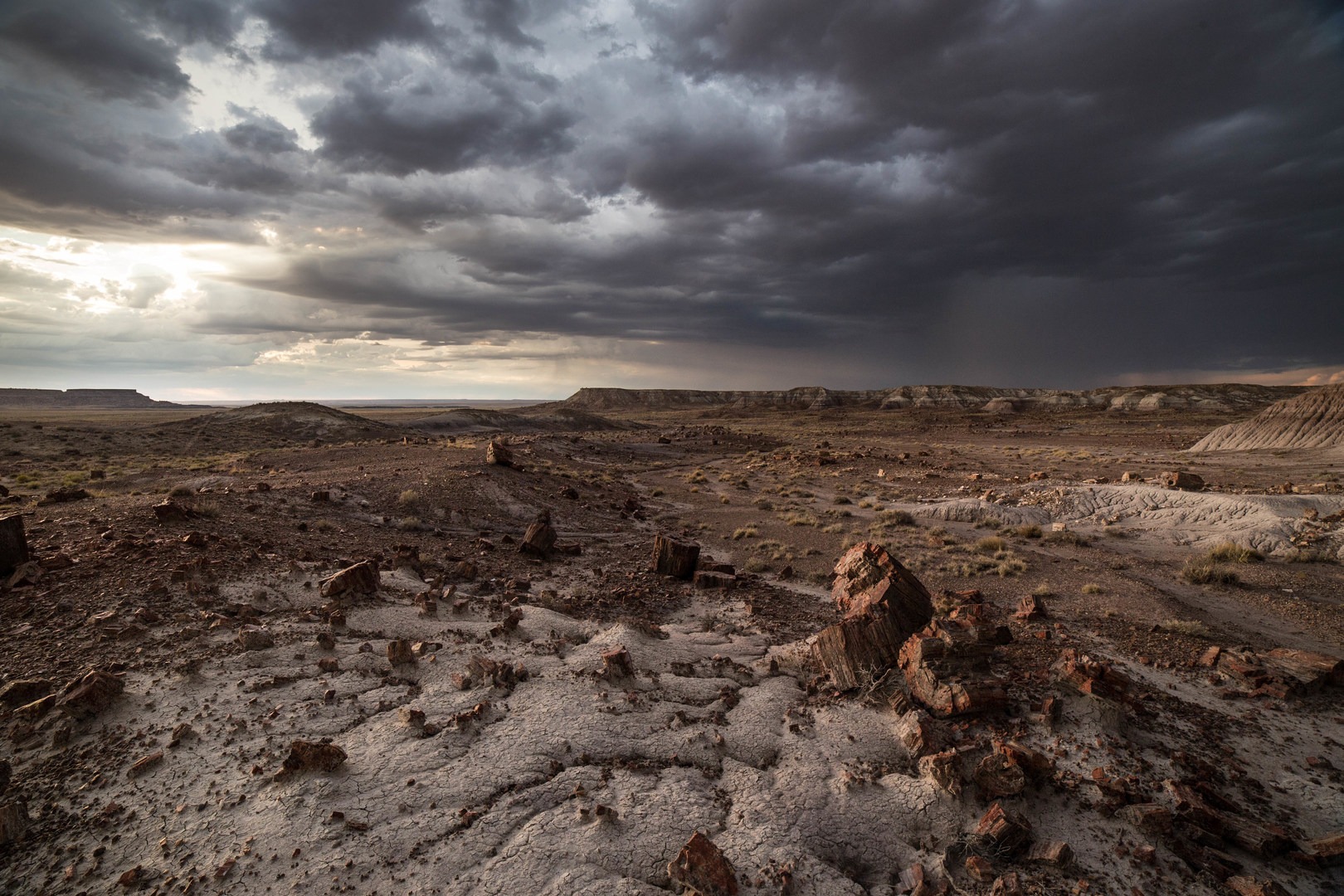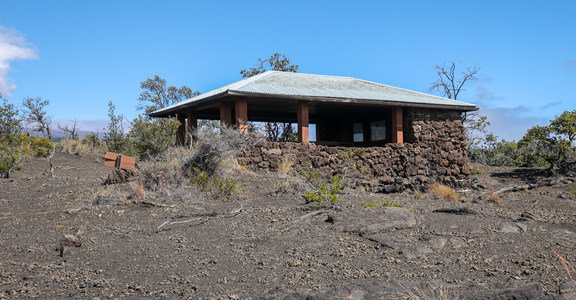You are here
You know to check the weather forecast before venturing outdoors. Our article, Weather Basics for Adventure Planning, explains what the forecasts really mean and how to get the most out of them. But of course, you also know that forecasts only go so far, and they aren't always accurate. If you forget to check the forecast, or you aren't able to, then it's obviously no use at all. That raises the question of how to predict weather in the field.
Perhaps you're on an extended wilderness trip with no access to information. Perhaps the forecast you checked has proved wrong days in a row and you need another way to know what's coming next. How can you tell when a storm is rolling in, or what conditions to expect the next day? Weather prediction is a tricky science, and it's particularly difficult without sophisticated instruments or computer models, but there are more than a few handy tricks to reading the weather on the go. Entire guidebooks have been written on the subject, so you should study those or attend some workshops if you want to become an expert, but the following tips make a good place to start. These will help you stay aware and prepared in the backcountry.
Before you can effectively read the weather anywhere, you must know what "normal" weather and cloud cover is for your destination and the season. If you are unfamiliar with the place, research the weather a bit before you go. If you don't have an idea for the baseline conditions, you won't be able to recognize the signals when the pattern is about to change.
Basic patterns
The most basic rule of weather is this: What happened yesterday is likely to happen today. Though it sounds banal, this is actually a useful rule of thumb for weather prediction.
The default behavior of weather is to continue in a daily pattern. The pattern changes only when some new influence occurs to break it. The key to predicting weather is learning the signals that such a change is coming. If no signals are present, expect a high likelihood of the weather doing whatever it did the day before.
Another useful rule of thumb is that weather is usually most volatile in afternoon the afternoon. Nights and mornings are more likely to be calm, especially during the warm months. The sun's rays heats Earth's surface during the day, and the temperature difference between land and air can be quite dramatic by afternoon, causing a lot of air and moisture to move up and down through the atmosphere, thereby generating weather. You can track the up and down movement with a measurement called atmospheric pressure.
Atmospheric pressure
One of the most reliable metrics for noticing oncoming weather changes is atmospheric pressure (also called barometric pressure)--essentially the force exerted by the weight of air above you. There is a standard atmospheric pressure for any location based on altitude, but actual pressure varies greatly with weather. High pressure means that air is weighing down more than normal, and this is a sign of stability in the atmosphere. Low pressure means that air is moving upward, and is generally a sign of shifting weather.
- High/Rising Pressure: Air is staying put at the land surface. Indicates stable weather.
- Low/Falling Pressure: Air is moving upward from the land surface into the atmosphere. Indicates changing weather
You cannot feel changes in pressure yourself, but there are ways to measure it or notice changes based on proxies in the environment. A barometer is a device that precisely measure atmospheric pressure. An altimeter, which measures elevation, works based on a barometer, which can also be used to track changes in pressure.
If you do not hike with an altimeter, you must rely on proxies to tell you what the atmosphere is doing. The classic indicator is smoke from a campfire. If smoke rises high in a straight column from the fire, then you have low pressure. If it stays low, you have high pressure. The effects of wind can muddle the smoke's behavior, however, and you obviously can't always have a campfire to refer to. The other way to get an idea of pressure changes, as well as other weather variables, is by watching the clouds.
Clouds
Clouds are obviously an indispensable weather indicator, but they can be difficult to read because of their complexity. With experienced observation, clouds can tell you not only whether or not it will rain but what type of rain to expect. You must pay attention to the type of clouds, their relative altitude, and the difference in cloud layers. Meteorologists assign cloud forms to an extensive classification system where shape, size, and position in the atmosphere define their characteristics. Below are the three most basic types and what they mean relevant to forecasting in the field, but you should know that you can refine your predictions by researching clouds in greater depth.
- Cirrus: Thin, wispy or streaky white clouds at high altitude. Cirrus clouds against a blue sky mean that air and moisture are moving around high in the atmosphere but don't always mean changes at ground level. They can occur during either high or low pressure systems. When cirrus clouds are more continuous and cover most of the sky in a thin veil or make a halo of light visible around the sun, they are a stronger signal of changes on they way. Don't try to read too much into cirrus clouds, but when you see them, pay close attention to whatever happens in the next 24 hours.
- Stratus: These are low- to mid-altitude clouds that are highly variable in form but tend to make layers. They may be wispy or puffy, white or gray. They may be scattered or continuous. They do not necessarily mean rain. If they are scattered and mostly white, or if they are continuous but you can see the sun through them, rain is probably not imminent. Also, many stratus clouds of different forms that you can see in different layers are much less likely to produce rain than those that are joined into a continuous layer at even altitude. When stratus clouds begin to aggregate in such a way, or when the scattered ones become big and dark, watch out for rain and increased winds. Stratus clouds that bring rain are typically brought by moist warm fronts and low pressure.
- Cumulus: These are you standard white, puffy clouds that form at low altitude. On their own they do not necessarily mean rain. Watch out if you notice them joining and darkening, though, or if you see them building to become very tall and dark. Low pressure conditions can cause cumulus clouds to build into stormy cumulonimbus clouds, commonly called thunderheads. These types of clouds are typical of summer showers in many parts of the continent; they can pop up overhead, but large banks of cumulus clouds can also move in with cold fronts.
Wind
Across most of North America, weather tends to move from west to east, though this varies based on location and season, especially in coastal areas. Familiarize yourself with the typical weather patterns of the region, and note how the wind blows throughout the day as well as what direction clouds tend to move. Assuming you experience typical weather for some days in a row, you will likely recognize a pattern, and therefore be able to tell when something changes.
If one morning suddenly you wake up and the wind is blowing strangely from the opposite direction as the days before, for example, you should be wary of the weather. Or if you notice clouds moving a different direction across the sky one day, a new front might be coming in. Any time you notice wind suddenly switching directions back and forth, you should be concerned that volatile weather might be brewing.
If the wind is so slight that it's hard to detect the direction, toss fine dirt or small leaves in the air to see which way they fall, or employ the old wet-the-finger trick. When you hold a wetted fore finger up in the air, the side that gets colder is the side from which the wind is blowing.
Other Indicators
As you become more familiar with an area, you may develop other methods of predicting the weather. Not only will you get to know the typical conditions and patterns very well, but you will notice other indicators in the environment. For example, smells emitted by plants or carried on the wind can alert you to rain on the way, wave patterns on a lake or ocean hold clues, the behavior and noises of animals may suggest when a storm is coming, even the behavior of plants such as opening or closing of leaves and flowers can help predict the weather. These are all all indicators that require intimate knowledge of a place, so it's up to you to spend more time outside and become your own expert on weather prediction in the field.





Comments
Sign In and share them.